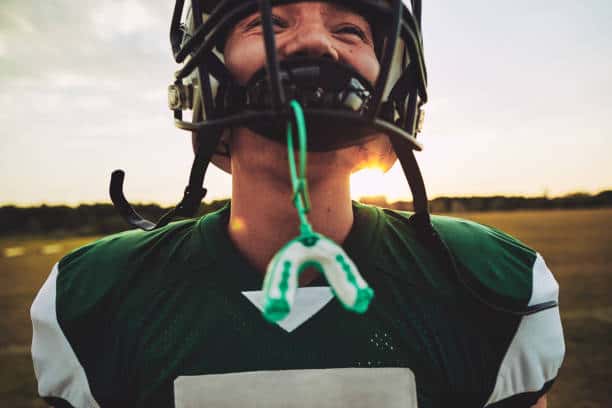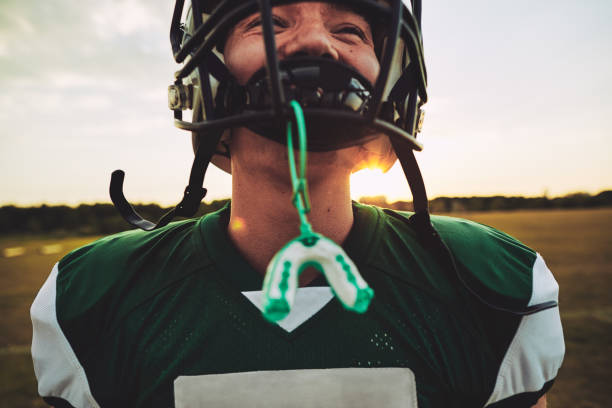
22 Mar How to Protect Your Teeth During Sports and Physical Activities
Sports and physical activities are excellent for maintaining physical fitness, boosting mental health, and fostering teamwork. However, they also come with the risk of injury — and one area often overlooked is dental protection. A sudden fall, collision, or misjudged movement can lead to chipped, broken, or even knocked-out teeth. Fortunately, with the proper precautions, you can keep your smile safe while staying active. This guide covers the most tooth-threatening sports, adequate protective gear, and what to do if a dental injury happens.
The Delicacy of Your Teeth During Physical Activities
From a dental perspective, your teeth are remarkably strong — designed to withstand the pressures of chewing and biting — but they’re not invincible. During physical activities, the risk of sudden impacts increases, and the enamel, though tough, can easily chip or fracture from direct trauma. The roots and supporting structures of your teeth are also vulnerable to displacement or damage, which can lead to long-term issues like tooth loss or nerve damage. Protecting your teeth isn’t just about avoiding cosmetic damage — it’s about preserving oral health and function.
Most Dangerous Sports and Activities to Your Teeth
When it comes to protecting your teeth, understanding which sports pose the highest risk is crucial. Contact sports like football, hockey, and boxing top the list due to the frequent physical collisions. Basketball and soccer also present a significant risk — not from intentional hits, but accidental elbows, falls, and stray balls. Surprisingly, non-contact sports like skateboarding, cycling, and gymnastics can be just as hazardous because of the potential for high-impact falls.
Even recreational activities like skiing, snowboarding, or martial arts come with a higher chance of facial injuries. If you or your child participates in any of these activities, recognizing the danger is the first step in prevention.
How to Protect Your Teeth
Wearing a mouthguard is the most effective way to safeguard your teeth. There are three main types to consider:
- Stock mouth guards: These are pre-formed and ready to wear. They’re the most affordable but often bulky and less secure.
- Boil-and-bite mouth guards: Made from thermoplastic material, these are softened in hot water, then molded to your teeth. They offer a better fit than stock guards.
- Custom-fitted mouth guards: Made by a dentist, these provide the best fit and protection, though they’re more expensive.
A face shield or helmet with a full-face guard offers additional protection for sports with fast-moving balls or sticks, like baseball or lacrosse. A well-fitted mouthguard is your best defense in sports like wrestling or basketball, where helmets aren’t typically worn.

Comfort Versus Protection
Athletes often avoid wearing mouthguards or face shields because they find them uncomfortable or feel they interfere with performance. However, modern designs focus on balancing comfort and protection.
Custom-fitted mouthguards are thinner and more lightweight, making breathing and communicating easier while offering superior protection. Boil-and-bite options have also improved in quality, offering a snugger fit without feeling cumbersome.
It’s worth remembering that dental injuries — like knocked-out teeth or jaw fractures — can lead to expensive, painful, and long-term dental procedures. The slight inconvenience of wearing a protective device is far better than months of dental work and recovery.
What to Do When You Do Get Injured
Even with the best protection, accidents happen. Knowing what to do immediately after a dental injury can significantly improve the outcome.
- For a knocked-out tooth: Hold the tooth by the crown (top part), not the root. If it’s dirty, rinse it gently with water — do not scrub or remove any tissue fragments. Try to reinsert the tooth into its socket, or if that’s not possible, keep it moist in milk or a saline solution and get to a dentist within 30 minutes.
- For a broken tooth: Rinse your mouth with warm water and apply a cold compress to reduce swelling. Collect any tooth fragments and see a dentist as soon as possible.
- For a cut lip or tongue, gently Clean the area and apply pressure to stop bleeding. A cold compress can help reduce swelling.
- For jaw injuries: If you suspect a jaw fracture or dislocation, keep the jaw still and seek emergency medical attention immediately.
Prompt treatment is essential for any dental injury to prevent further complications and improve the chances of saving a damaged tooth.
Conclusion
Protecting your teeth during sports and physical activities may take a little planning and investment, but a healthy, intact smile is worth the payoff. Whether you’re an athlete yourself or a parent of a sports-loving child, making dental protection a priority can prevent painful, costly injuries down the road. Remember: a comfortable, well-fitted mouth guard and proper protective gear can distinguish between a quick recovery and a lifetime of dental issues.



No Comments